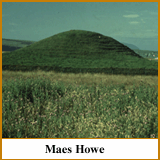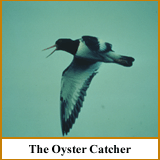

 |
 |
|
|
|
|
South
of Scotland
| West Highlands & Islands, Loch
Lomond, Stirling & Trossachs |
Perthshire, Angus & Dundee and Kingdom of Fife | The
Highlands of Scotland | Grampian
Highlands, Aberdeen & North East Coast | The
Outer Islands - Orkney, Shetland and Western Isles | Edinburgh
- City, Coast and Countryside | Greater
Glasgow & Clyde Valley
|
|||
| THE
OUTER ISLANDS - ORKNEY, SHETLAND AND WESTERN ISLES |
||||
| History is layered deep in these northern archipelagos, in the settlements of the earliest peoples to the Viking invaders. Today's invasion is from the thousands of seabirds and other wildlife that make their home in these magical isles. | ||||
| ORKNEY - A VIKING LEGACY Orkney, a gathering of islands, are mostly low-lying and green. Centuries before the Norsemen arrived, early settlers erected stone monuments, including cairns, brochs (round towers), tombs and standing stones, which still survive to this day. St Magnus Cathedral in Kirkwall was founded in 1137 and is one of the finest examples of Norman architecture in Europe. Skaill House at Sandwick is another reminder that the islands were a religious centre in medieval and later times. Much more recently, naval history associated with the anchorage of Scapa Flow is explained in the interpretation centre at Lyness on Hoy. On the other side of Scapa Flow is the Hoxa Tapestry Gallery, showing large hand-woven tapestries inspired by the island's land and seascapes. Good internal ferry and air links make excursions to the many outer islands easy. SHETLAND - CROSSROADS OF THE NORTHERN SEAS Shetland is unlike anywhere else in Scotland. These islands lie 112 miles beyond the Scottish mainland and were once part of the Danish kingdom. Even still, their culture and dialect retains a strong Scandinavian flavour. The Shetland Museum in Lerwick, the main town, takes up the island's seagoing theme, while one can take a day trip in the replica Viking longship, Dim Riv. Crofting life in Scotland comes alive at the Shetland Croft Museum, a traditional dwelling, complete with corn drying kiln. A little further south is Jarlshof, where excavations show the various types of dwellings, from Neolithic earth houses to a 17th century laird's mansion. Scalloway Castle is an impressive 17th century fortress in Scalloway. However, the most northerly castle in Scotland is Muness Castle on the island of Mousa, south of Lerwick, which makes a fascinating excursion. While Shetland's seabird colonies are spectacular one should also visit the little island of Noss or Hermaness on the island of Unst at the northern end or Sumburgh Head at the southern tip. Gannets and puffins on the cliff and the acrobatics of the skuas are certain to enthrall you. THE WESTERN ISLES Lying at the very edge of Europe, these peaceful islands have a rugged natural beauty, with dazzling beaches, wildlife and unique cultural traditions. The Western Isles is a chain of islands strung out along the Atlantic off the northwest coast of Scotland. Today, excellent sea and ferry links bring them close to the mainland, yet they still keep their own distinctive heritage. The rich Gaelic culture of the Western Isles can be discovered in the Museum nan Eilean in Stornoway. Also in the same town is An Lanntair (Gaelic for lantern), a gallery shedding light on contemporary Gaelic interpretations of the visual arts, as well as providing a venue for musical and other performances. The everyday life of times past can be experienced at the Black House at Arnol on the west coast of Lewis, a preserved example of a once typical rural dwelling, with its central peat fire filling the house with a characteristic smoky dimness. North Uist has its own museum and art gallery, the Taigh Chearsabhagh Visitor Centre close to the ferry pier at Lochmaddy. Kisimul Castle on the Isle of Barra is reached by boat and the island's story is told in the Barra Heritage Centre. Local history is also the theme of the Kildonan Museum in south Uist. Visitors to the Western Isles should also note that due to religious beliefs, some shops and petrol stations are closed on Sundays and there is limited public transport. |
||||
|
 Orkney's
most famous prehistoric site is the stone-age village of Skara Brae,
although the burial chamber of Maes Howe is equally impressive.
It dates from around 2,500 BC and is believed to have been robbed by Vikings
some 3,000 years later. The Broch of Gurness was in use
over ten centuries, from the Late Iron Age to the coming of the Vikings.
Tankerness House Museum in the main town of Kirkwall, has
displays covering 5,000 years of island life.
Orkney's
most famous prehistoric site is the stone-age village of Skara Brae,
although the burial chamber of Maes Howe is equally impressive.
It dates from around 2,500 BC and is believed to have been robbed by Vikings
some 3,000 years later. The Broch of Gurness was in use
over ten centuries, from the Late Iron Age to the coming of the Vikings.
Tankerness House Museum in the main town of Kirkwall, has
displays covering 5,000 years of island life. Heartland
of the Gaelic language (though everyone also speaks English), the Western
Isles stretch from the Butt of Lewis down to Barra and beyond. White beaches
are backed by shell sand pasture, rich with wild flowers. There are many
prehistoric sites; notably the Callanish Standing Stones
on Lewis. Lewis and Harris are similar islands, though Harris is more
mountainous. Both have spectacular beaches and there are several more
examples of this type of brilliant white Hebridean beach on the islands
lying to the south. Causeways link the Uists and Benbecula while nature
abounds, with reserves at Balranald on North Uist and also
Loch Druidibeg. Wild flowers and bird-life too are at their
most common in spring and early summer.
Heartland
of the Gaelic language (though everyone also speaks English), the Western
Isles stretch from the Butt of Lewis down to Barra and beyond. White beaches
are backed by shell sand pasture, rich with wild flowers. There are many
prehistoric sites; notably the Callanish Standing Stones
on Lewis. Lewis and Harris are similar islands, though Harris is more
mountainous. Both have spectacular beaches and there are several more
examples of this type of brilliant white Hebridean beach on the islands
lying to the south. Causeways link the Uists and Benbecula while nature
abounds, with reserves at Balranald on North Uist and also
Loch Druidibeg. Wild flowers and bird-life too are at their
most common in spring and early summer.